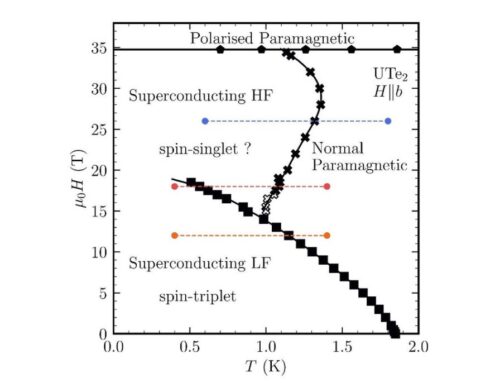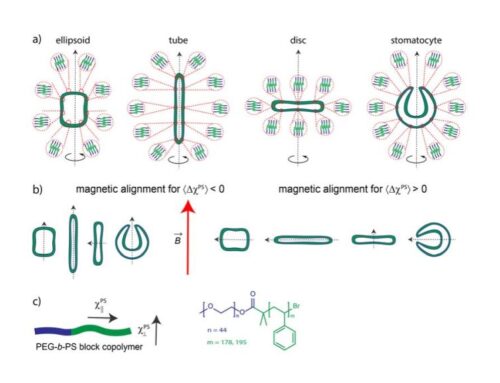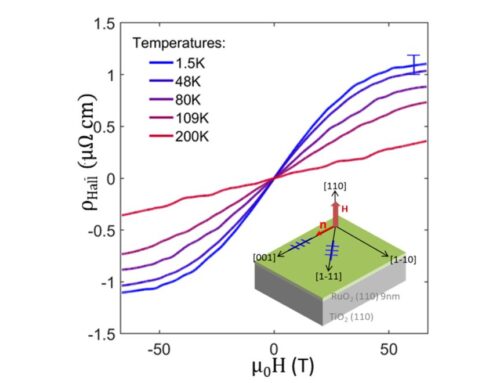T. Gottschall, HLD Dresden.
The giant magnetocaloric effect, in which large thermal changes are induced in a material on the application of a magnetic field, can be used for refrigeration applications. However, commercial uptake is limited. Researchers from Barcelona, Darmstadt, and the HLD proposed an approach to magnetic cooling that rejects the conventional idea that the hysteresis inherent in magnetostructural phase-change materials must be minimized to maximize the reversible magnetocaloric effect. Instead, they introduced a second stimulus, uniaxial stress, so that the hysteresis can be exploited rather than avoided. The working principle of such a device is schematically illustrated in Figure 1. This cycle allows to lock-in the ferromagnetic phase as the magnetizing field is removed, which allows one to drastically reduce the volume of the magnetic field source and, therefore, the amount of expensive Nd–Fe–B permanent magnets needed for a magnetic refrigerator. In order to assess the suitability of multicaloric materials, direct measurements of the adiabatic temperature change in pulsed-field experiments are crucial. Varying the magnetic-field strength of the pulse between 1 and 50 T furthermore helps to deepen the understanding of time-dependent effects of the first-order transition in the materials needed for exploiting the hysteresis cycle. This could lead to an enhanced usage of the giant magnetocaloric effect in commercial applications. The technical feasibility of this hysteresis-positive approach is demonstrated using Ni–Mn–In Heusler alloys in pulsed magnetic fields and under uniaxial load (Figure 2).

Figure 1: Schematic of a cooling device that could exploit the thermal hysteresis of multicaloric materials

Figure 2: Experimental demonstration of a hysteresis cycle in Ni–Mn–In. As the stress is applied the temperature of the material increases, but this is reversed when the material is unloaded. A short magnetic field pulse then results in an irreversible cooling effect. After the pulse, the material slowly relaxes back to the temperature of the surroundings.
A multicaloric cooling cycle that exploits thermal hysteresis, T. Gottschall, A. Gràcia-Condal, M. Fries, A. Taubel, L. Pfeuffer, Ll. Mañosa, A. Planes, K. P. Skokov, and O. Gutfleisch, Nat. Mater. 17, 929 (2018). https://www.nature.com/articles/s41563-018-0166-6






Leave A Comment
You must be logged in to post a comment.